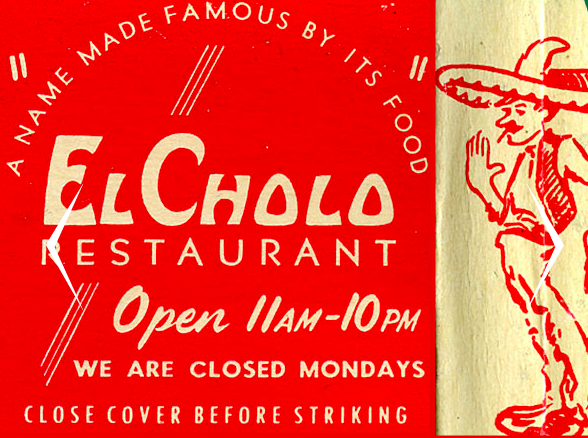This Is Why Mexican Restaurants Were Forced To Call Themselves “Spanish” Restaurants In 19th Century L.A.

If you love authentic Mexican food, you probably know all about the food scene in Los Angeles. From fresh guac to carne asada tacos, Mexican cuisine is easy to find in the sunny California city. It also doesn’t hurt that we have Google and Yelp to lead the way. By simply searching for “Mexican restaurant near me,” you can find a long list of eateries to fulfill your dreams of burritos and salsa. But if this were the late 1800s, you’d have to look up “Spanish restaurant” instead.
In the 19th century, Los Angeles had its fair share of Mexican restaurants. These spots served authentic Mexican dishes, like enchiladas and delicious tortillas made from scratch. There was just one caveat, though: Mexican immigrants were not welcomed by white Americans. They faced a great deal of racially-charged violence and discrimination, shares Eater LA.
European culture, on the other hand, was admired by those same Americans.
In turn, Mexican restaurant owners were forced to call themselves “Spanish.” This allowed them to work around racial prejudice while making a living by selling food. In the other words, the only way Mexican restaurants could be accepted by American customers was to adopt a Spanish facade.
This type of re-labeling is precisely what set the tone for whitewashing of Mexican restaurants.
Cinco de Mayo dinner w/ @juliedelcarmen at LA's 1927 vintage El Cholo - earlier: Kubrick exhibit at LACMA - great day pic.twitter.com/UE43eQchrA
— Louie del Carmen (@LouiedelCarmen) May 6, 2013
As you can imagine, adopting the Spanish labeling didn’t stop at the food.
Mexicans were forced to re-label themselves as non-Mexican, too.
In Taco USA, author Gustavo Arellano explains the racial atmosphere in Southern California during the early 20th century. The book, which was quoted on Eater LA, states that it was more acceptable to identify as Sonoran or Spanish. Sonoran, according to Arellano, “was a group of immigrants from that northern Mexico state who had originally settled [in] Los Angeles.”
Here’s what El Cholo (which opened in 1927) looks like now:
It was the only way Mexicans — and their restaurants — could make a living in America.
Perhaps unsurprisingly, this bite of food history is reminiscent of the dark background of Chinese-American food.
Like Mexicans, Chinese immigrants were not welcomed by white Americans in the late 1800s.
Both groups experienced racial segregation and intense xenophobic fears.
Eventually, the fears were so strong that the Chinese Exclusion Act of 1882 was passed. This forbid Chinese immigrants from entering the United States.
The only exception was for business owners, including those that operated restaurants. Business owners could also bring employees from China. It’s exactly why there are so many Chinese-American restaurants in the U.S.A. today.
Interestingly, Mexican and Chinese food are two of the most popular ethnic cuisines in the country.
Yet, it’s still common for the individuals behind these cuisines to face racial discrimination from the same people who enjoy their food.
Let that sink in for a moment.
